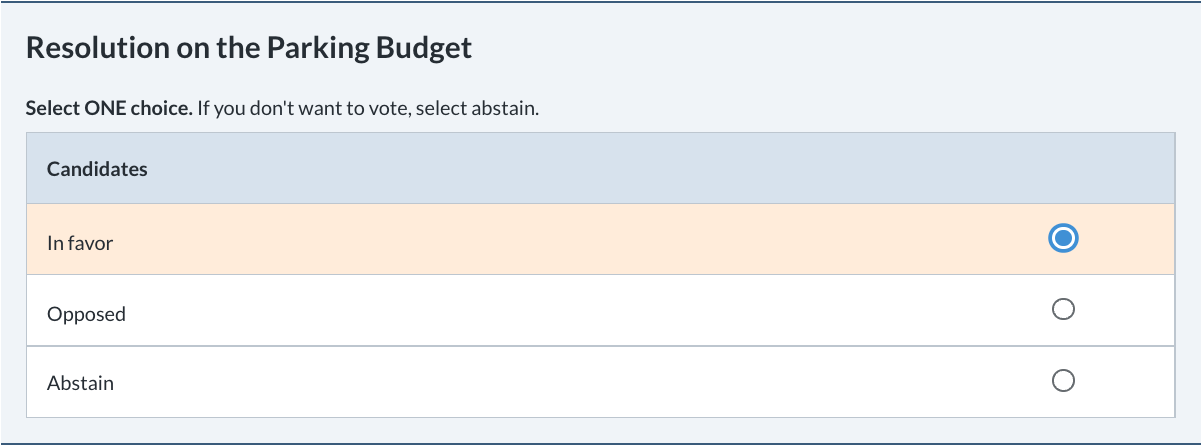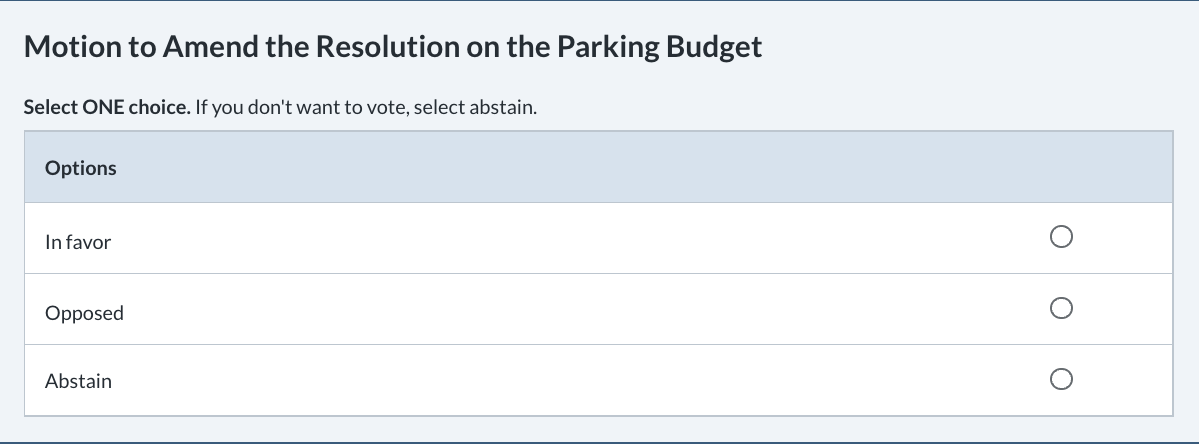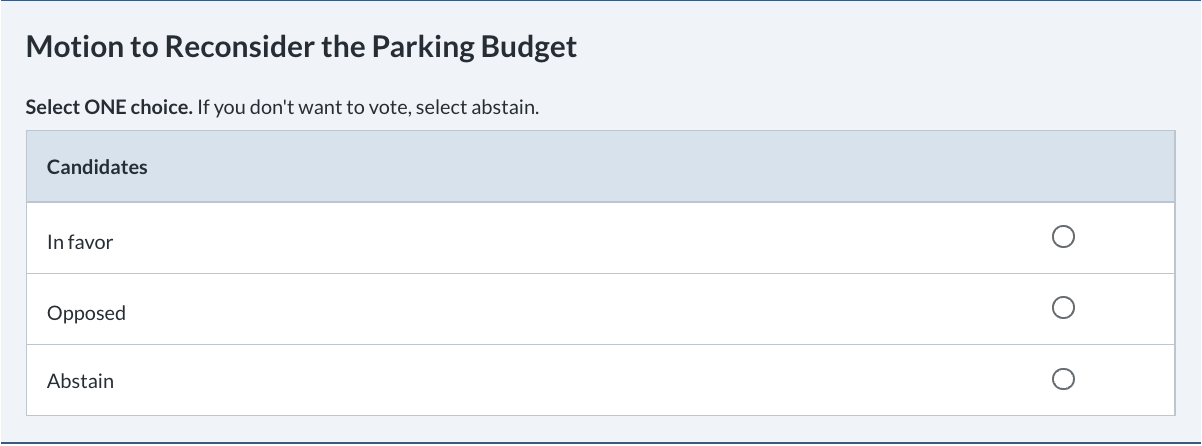Voters vote for or against the main motion; eg, a resolution.

Motions are extremely common in formal meeting procedures and are a fundamental part of parliamentary procedures. For example, taking a recess during a parliamentary proceeding is initiated by calling a motion to take that recess. The format of the ballot is simple, with a simple “In favor” or “Opposed”, with the winning threshold determined as a majority using Plurality Voting.
Voters vote for or against a Secondary Motion; for example, an amendment, or an adjournment.

This is similar to the main motion in format. However, organizations have varied requirements for the threshold as to whether a Secondary Motion is approved or disapproved. Commonly, it is either a simple majority or a two-thirds majority using Plurality Voting.
Voters vote for or against a motion to bring back a question before the assembly; eg, to reconsider the question.

This is similar to the Main Motion in format but is less commonly used as it is a very formal method of conducting business during a meeting. The threshold for acceptance is similar to the Bring Back motion, either a simple majority or a two-thirds majority using Plurality Voting.